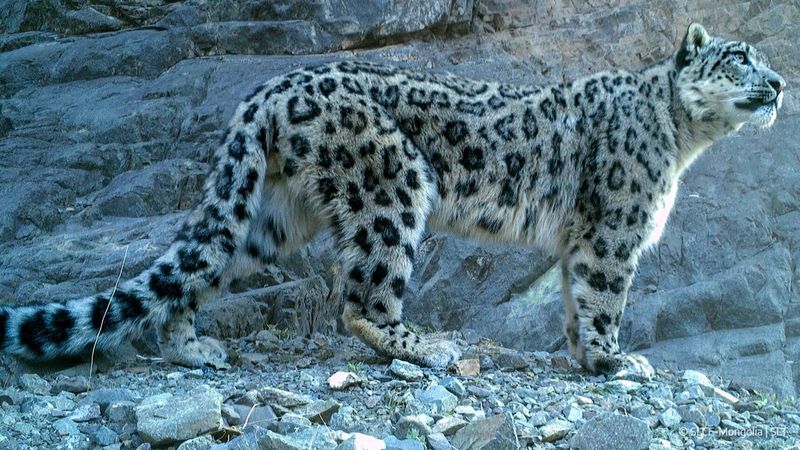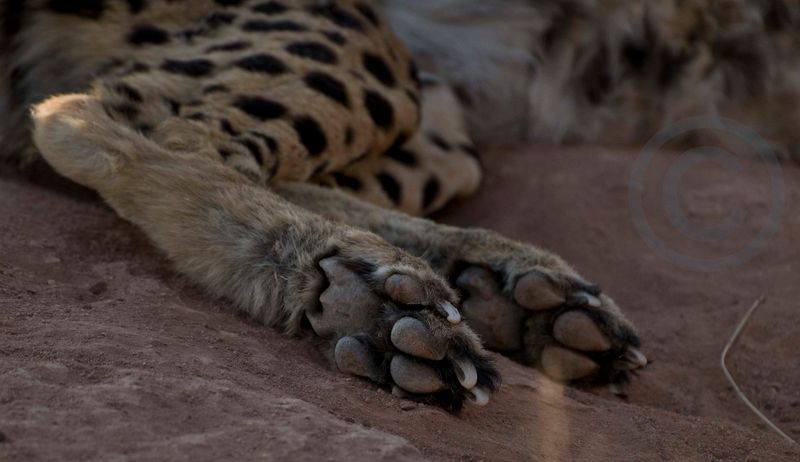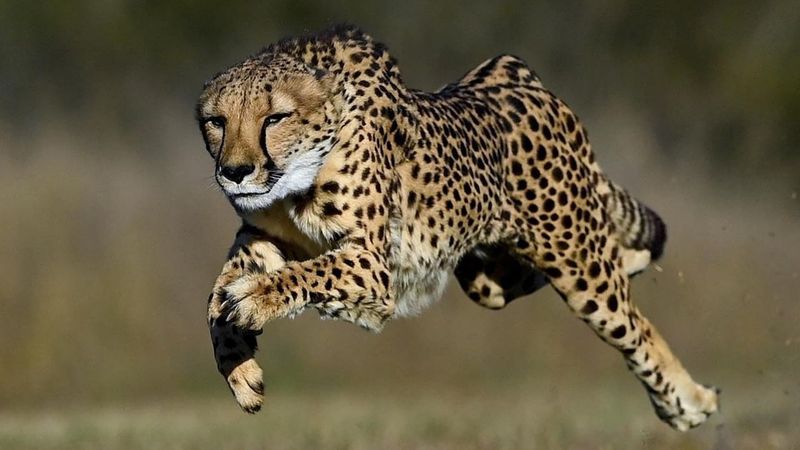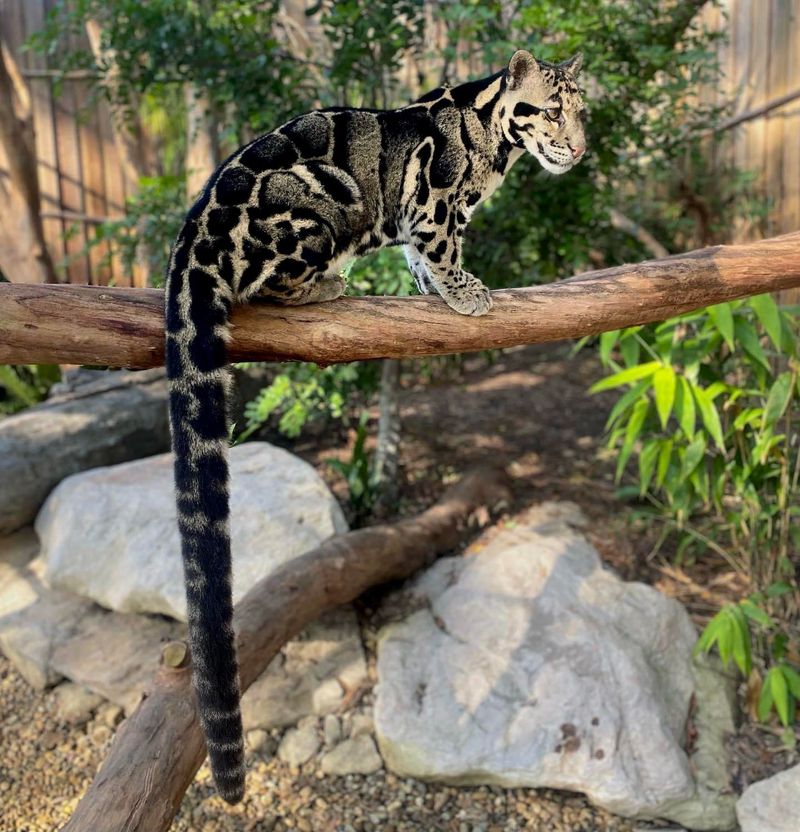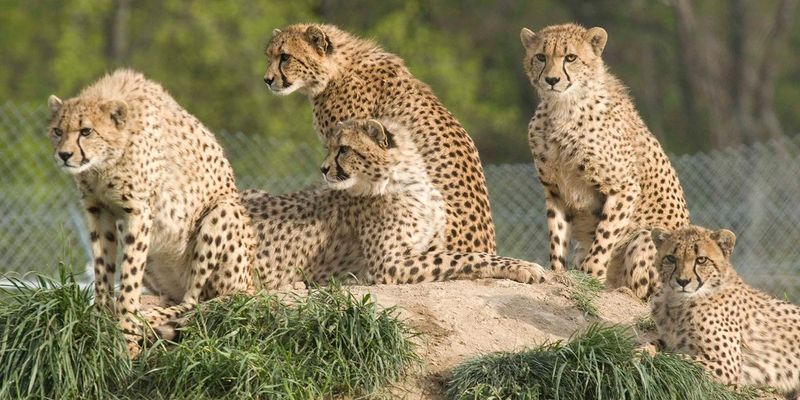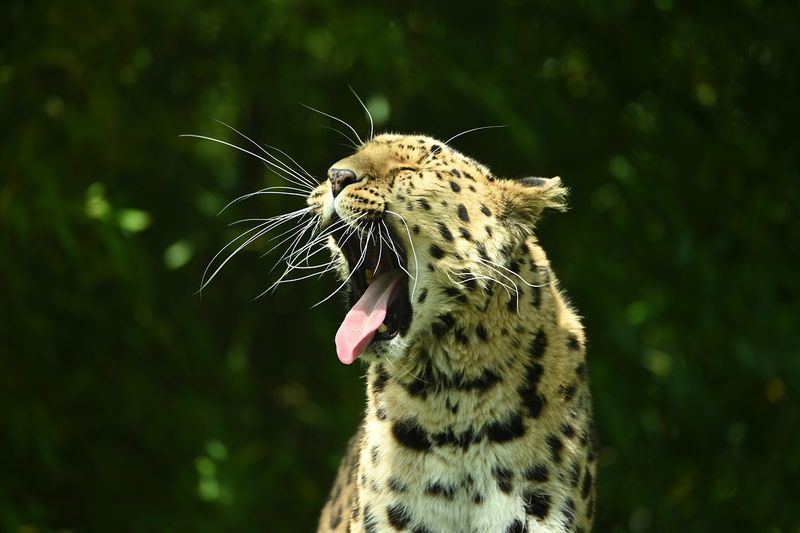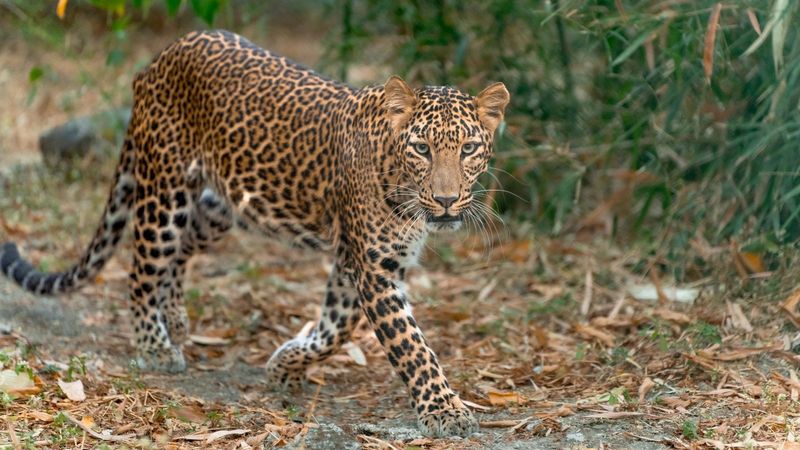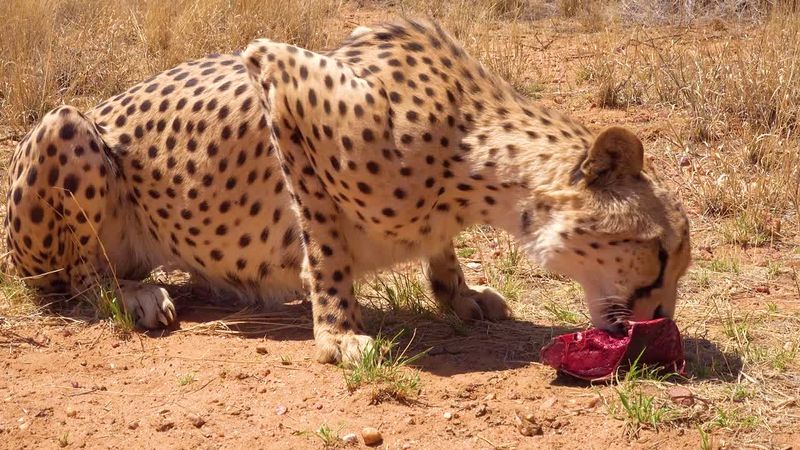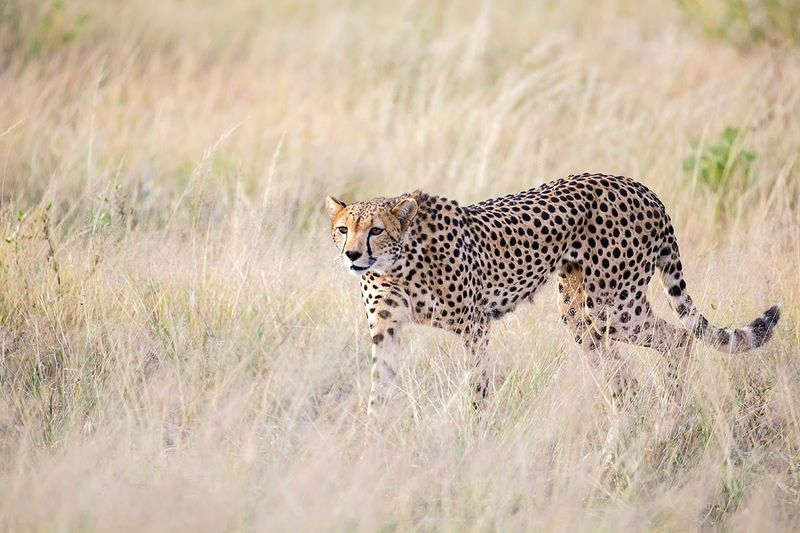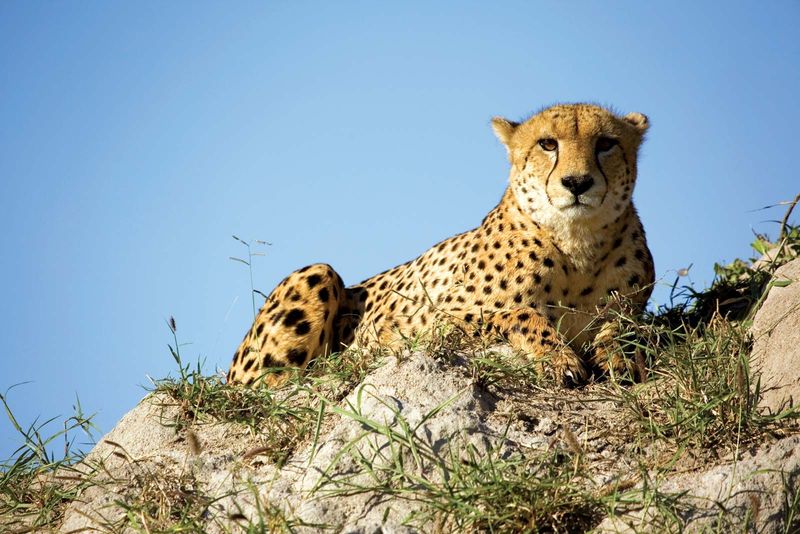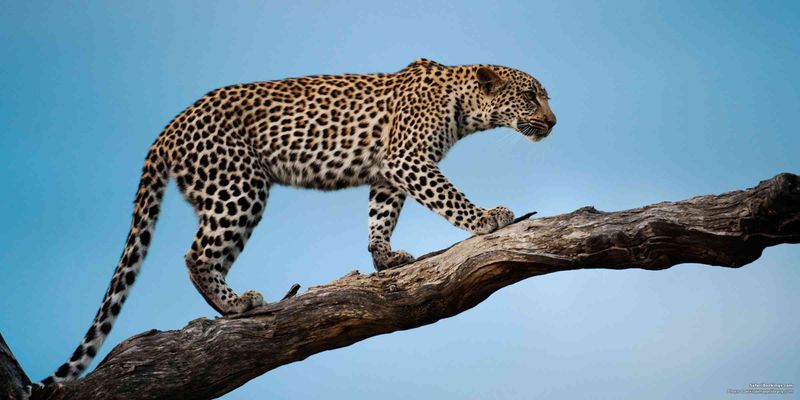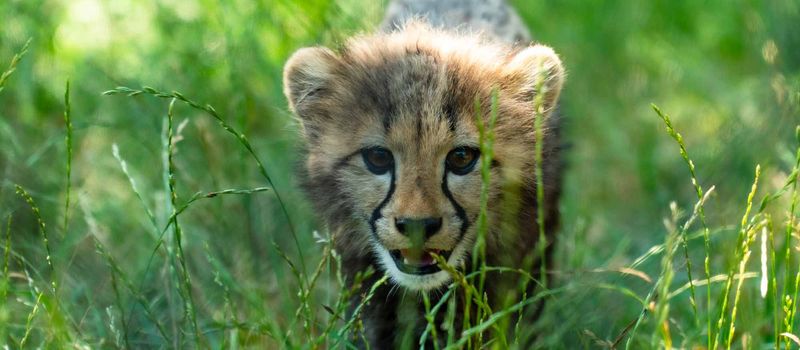📖 Table of Content:
- 1. Spots and Patterns
- 2. Body Structure
- 3. Claws and Grip
- 4. Facial Markings
- 5. Hunting Techniques
- 6. Tail Functionality
- 7. Social Behavior
- 8. Vocalizations
- 9. Cub Rearing
- 10. Habitat Preferences
- 11. Dietary Habits
- 12. Speed and Agility
- 13. Conservation Status
- 14. Geographical Range
- 15. Role in Ecosystem
Cheetahs and leopards are frequently confused because of their similar appearance and shared habitats. Despite both being large, powerful cats, they possess unique traits that distinguish them from one another. Their differences can be seen in various aspects, from physical features to hunting techniques.
Though both have spotted coats, the patterns and textures of their fur are far from identical. Cheetahs are built for speed, with a body designed for sprinting, while leopards exhibit strength and agility, suited for climbing and stealth. These differences in body structure reflect their distinct approaches to hunting and survival.
The behavioral traits of cheetahs and leopards further emphasize their divergence. Cheetahs rely on speed to chase down prey, while leopards use stealth to ambush and overpower their targets. Understanding these variations offers deeper insight into the adaptations that make each species a successful predator in its own right.
1. Spots and Patterns
Cheetahs and leopards both have spots, but their patterns differ significantly. Cheetah spots are solid black and evenly distributed across their coat, resembling polka dots. Leopards, on the other hand, have rosettes—irregular, rose-like patterns with a lighter center, giving them a more complex appearance.
These patterns are not just aesthetic; they are functional, aiding in camouflage in their respective environments. Cheetahs’ simple spots blend well with the grasslands, while leopards’ rosettes match the dappled shadows of forested areas. Understanding these differences helps in identifying these cats in the wild.
2. Body Structure
The bodies of cheetahs and leopards reveal their unique adaptations to their environments. Cheetahs have slender, aerodynamic bodies designed for speed. They possess long legs and a lightweight frame, making them the fastest land animals, capable of reaching speeds up to 70 mph.
Leopards are more robust and muscular, built for strength and power. Their stocky build allows them to climb trees with ease, carrying prey twice their weight. This difference in body structure is a result of their distinct hunting strategies, with cheetahs relying on speed and leopards on stealth and strength.
3. Claws and Grip
One of the most fascinating differences between cheetahs and leopards lies in their claws. Cheetahs have semi-retractable claws, similar to dog claws, providing them with enhanced grip and traction during high-speed chases. This adaptation is crucial for maintaining stability while running.
Leopards possess fully retractable claws, like most other cats, which aids in climbing and silently stalking prey. This ability to retract their claws keeps them sharp and ready for hunting. The claw structure reflects the distinct lifestyles and hunting techniques of these two big cats.
4. Facial Markings
A clear way to differentiate cheetahs from leopards is by their facial patterns. Cheetahs have black “tear stripes” that run from the inner corners of their eyes to their mouths. These stripes help reduce sun glare, improving their ability to concentrate on prey.
Leopards lack these tear lines, instead sporting rosettes and lighter spots on their faces. Their facial markings are more subtle but no less beautiful. These differences in facial features not only aid in identification but also serve functional purposes in the wild.
5. Hunting Techniques
The way cheetahs and leopards hunt demonstrates how each species is perfectly adapted to its environment. Cheetahs rely on their unparalleled speed to chase down prey in wide-open spaces. Their long tails assist with balance and direction, allowing them to make sharp maneuvers while chasing.
Leopards, in contrast, are stealthy hunters. They stalk prey silently through dense forests or tall grass, relying on their ability to ambush. Once they catch their prey, leopards often drag it up trees to protect it from scavengers. These methods underscore the behavioral differences between the two species, shaped by their environments.
6. Tail Functionality
While both cheetahs and leopards have powerful tails, they serve different functions. A cheetah’s long, flat tail acts as a stabilizing rudder during high-speed pursuits, helping it maintain control and make quick turns while chasing after prey.
Leopards have shorter, more muscular tails, which assist in climbing and balance when perched in trees. This tail structure supports their arboreal lifestyle, where they often store and consume their prey. The contrasting tail functionalities align with each species’ hunting and survival strategies, reflecting how evolution has tailored these traits to their environments.
7. Social Behavior
The social dynamics of cheetahs and leopards highlight their unique lifestyles. Cheetahs are more inclined to live in groups, often forming family units. Males, particularly, form coalitions, where brothers work together to hunt and coexist even into adulthood.
Leopards are solitary creatures, preferring to live and hunt alone. They establish and defend large territories, interacting with others primarily during mating or when a mother is raising cubs. This solitary nature reduces competition for resources. Understanding these social dynamics offers insight into their behavioral ecology and how each species thrives in their environment.
8. Vocalizations
The vocal sounds of cheetahs and leopards vary significantly, reflecting their different communication requirements. Cheetahs are recognized for their chirping, which is similar to bird calls. These chirps help mothers stay connected with their cubs and enable communication within coalitions.
Leopards have a deeper, more powerful roar, heard over long distances. Their vocalizations are used for asserting territory and finding mates. The contrast in vocal sounds highlights how each species has evolved its communication methods to suit its lifestyle, whether in social coalitions or solitary territories.
9. Cub Rearing
Cheetahs and leopards differ in their cub-rearing techniques. Cheetah mothers raise their young in open areas, moving frequently to avoid predators. Cheetah cubs stay with their mothers for about two years, learning essential survival skills.
Leopard mothers keep their cubs hidden in dense foliage or caves, minimizing exposure to threats. Leopards are fiercely protective, and their young often stay with them for up to three years. These differing maternal strategies reflect the varied challenges each species faces in protecting their offspring from predators and other dangers.
10. Habitat Preferences
The habitat choices of cheetahs and leopards are dictated by their hunting techniques. Cheetahs thrive in open grasslands and savannahs, where they can leverage their speed to catch prey. These wide, open spaces provide the ideal environment for fast chases.
Leopards, however, adapt to diverse habitats, from dense forests to mountainous regions. Their ability to climb and ambush suits these environments. Leopards’ adaptability allows them to coexist with other large predators, finding niches in varied landscapes. Recognizing these habitat preferences helps in understanding their ecological roles and conservation needs.
11. Dietary Habits
The feeding habits of cheetahs and leopards demonstrate the contrast in their hunting techniques and ecological positions. Cheetahs mainly hunt small to medium-sized herbivores like gazelles, depending on their speed to quickly close the distance and catch their prey.
Leopards have a more varied diet, consuming a wide range of animals, from small rodents to large antelope, even fishing in streams. They often drag their kill into trees to prevent scavenging. These dietary differences reflect each species’ adaptability and role in their respective ecosystems, contributing to the biodiversity of their habitats.
12. Speed and Agility
The defining features of cheetahs and leopards include their speed and agility. Cheetahs hold the record for speed, reaching an impressive 70 mph in short bursts, thanks to their lightweight frames and long legs. This unparalleled speed is what makes them such effective hunters.
Leopards, however, excel in agility. They are adept climbers and can navigate rugged terrain with ease. Their strength and stealth compensate for not matching the cheetah’s speed. These differences underscore the evolutionary paths each species has taken, optimizing their bodies for survival in diverse environments.
13. Conservation Status
The plight of cheetahs and leopards in the wild is evident through their conservation status. Cheetahs are currently classified as vulnerable, with their populations declining due to habitat loss and human-wildlife conflict. Conservation initiatives prioritize preserving their habitats and minimizing conflicts with local human communities.
Leopards are more adaptable but face similar threats, leading to a near-threatened status. Their ability to live in varied environments offers some resilience, yet they are still at risk from poaching and habitat encroachment. Understanding these statuses is crucial for developing strategies to protect these majestic creatures for future generations.
14. Geographical Range
Cheetahs and leopards have distinct geographical ranges. Cheetahs are primarily found in sub-Saharan Africa, with a small population in Iran, inhabiting open plains and grasslands.
Leopards boast a wider range, found across Africa, parts of Asia, and the Middle East. Their adaptability allows them to thrive in various habitats, from rainforests to arid regions. This broad distribution enhances their resilience against environmental changes, yet they still face significant threats. Recognizing these ranges is vital for conservation planning, ensuring efforts are targeted and effective in preserving these species globally.
15. Role in Ecosystem
In their ecosystems, cheetahs and leopards serve essential functions. Cheetahs help regulate herbivore populations by hunting the weak and sick, promoting greater biodiversity. Their hunting behavior also affects the movement and habits of prey species, influencing the broader ecosystem.
Leopards, meanwhile, control populations of smaller predators and scavengers, contributing to ecological balance. They are apex predators that prevent any single species from dominating, ensuring a diverse and stable environment. These roles highlight the importance of both species in maintaining the intricate web of life within their habitats, underscoring the need for their conservation.


